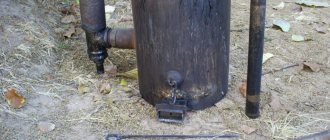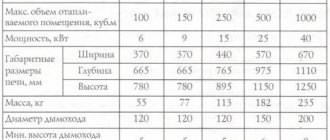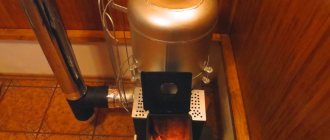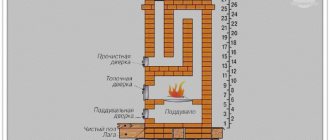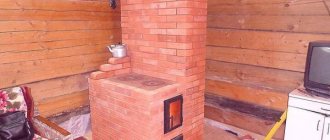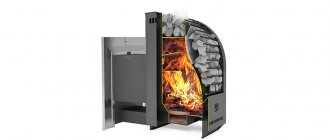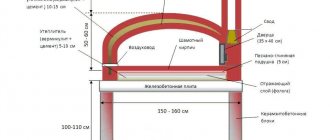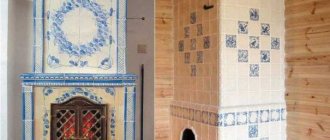Charcoal is a very popular product, used by summer residents, vacationers, barbecue and shish kebab lovers, as well as by the population living in the southern regions of the country with a small amount of wood for heating residential premises. Its production is simple, economical and environmentally friendly.
It is produced by burning wood in special charcoal kilns. The choice of such devices today is huge. There are both serial stoves, and it is possible to make a stove for the production of charcoal with your own hands. The charcoal produced in such units can be divided into 3 categories:
- Black coal (obtained from willow, willow, ash, linden, alder, aspen)
- Red coal (obtained from pine, spruce, larch, cedar)
- White coal (obtained from birch, elm, beech, oak).
The quality of the output product is higher for deciduous trees, and the amount of coal produced is greater for coniferous wood.
Device and elements
All devices for the production of charcoal can be divided into two main groups - stationary installations and mobile stoves. The former are used in large industries to produce large volumes of products, and the latter are used in the private production of small batches of coal.
There are also pit furnaces for coal pyrolysis, dug below ground level, but they are gradually becoming a thing of history in industrial production, but are still widely used in household plots and private households.
The main difference between such units is the method of applying temperature to the wood. Wood raw materials can be heated either with the help of hot gases (retort furnaces) or by transferring thermal energy from the walls of a metal tank, where the main process of dry distillation of firewood into the coal fraction occurs.
Loading of processed raw materials can be either automatic or manual. For this purpose, trolleys, conveyors, or manual labor are used. A drawing of a charcoal kiln for producing charcoal is shown below:
Self-production
Stores sell bags of ready-made coal, but they are not cheap. You can independently produce a fairly large volume of fuel, minimizing costs.
Hardwood is best suited (you will get grade A coal):
- Birch - gives intense heat and rapid heat transfer.
- Oak – uniform heat and long burning process.
- And also - beech, hornbeam, elm.
Coniferous species + wood from the first list (grade B):
- pine;
- fir;
- spruce etc...
Grade B – soft breeds:
- poplar;
- aspen;
- alder;
- willow;
- linden, etc...
Let's look at two “artisanal” production methods.
When building our own house, we ourselves can plan the layout of the premises, but there are also some standards that must be met in accordance with sanitary and construction requirements. The requirements for a boiler room in a private house must be strictly followed, because the safety of the residents depends on it. What standards does SNIP require for a boiler room, read the article.
You will find step-by-step instructions for making a stove with a heat exchanger here.
Did you know that heat pumps are used not only in refrigeration systems and air conditioners, but also for heating rooms? Here https://microklimat.pro/otopitelnoe-oborudovanie/otopitelnye-pribory/teplovoj-nasos-dlya-otopleniya-doma.html you will learn how to use them correctly and how to set up a heating system with a heat pump.
In a barrel
Capacity requirements:
- The dimensions of the barrel will depend on the amount of raw materials available.
- The walls must be thick.
- The oil product barrel must first be burned out.
- It is not advisable to use containers for chemicals.
- There must be a lid made of non-flammable materials that fits tightly to the barrel.
Sequence of work:
- Several small holes are made in the lid to allow gases to escape, but so that they can be closed.
- A mini-stove is built on a sheet of metal from several bricks.
- The barrel is placed on bricks.
- It is filled to the top with wood raw materials and covered with a lid.
- A fire is built under the container, in the bricks.
- When the barrel warms up well, gas will begin to come out of the wood.
- The combustion process continues all the time until the gas comes out and a little after that - in general, about 2-3 hours.
- Now the fire is extinguished, and the holes in the lid are closed.
- The barrel is left alone for a day or two.
The method is convenient and inexpensive, but it is difficult to control the process. At first, you may or may not burn out the coal. The next method is “in the hole”, it is more open, which means there is less risk of errors.
In the hole
An open place is chosen in the forest, where there are many branches and twigs nearby.
Dimensions of the hole to be prepared:
- Cylinder shape, vertical walls.
- Diameter about 80 cm.
- Depth 50 cm.
- The bottom is carefully compacted.
This small pit will yield about 2 bags of coal. In practice, its dimensions will depend on the amount of fuel that needs to be obtained.
Further instructions:
- The main raw materials are prepared in advance - branches, logs, etc. cleared of bark and sawed 30 cm long and no more than 7 cm thick.
- Birch bark, dry twigs and cones will help make a small fire at the bottom of the pit.
- Then more and more dry wood is added to the fire so that the entire bottom becomes a large fire.
- The main raw materials are gradually poured in (close to each other, but so that they flare up).
- After about three hours, when the pit is full of coals, a layer of leaves or green grass is filled in.
- The next layer is earth.
- The surface is compacted.
- The pit is left for 2 days - during this time the coal will cool down.
- After 2 days, the layer of soil is removed, the coal is shoveled out and sifted.
It’s good if, at the beginning of work, the top layer of soil was carefully removed. Now the hole can be filled up and the fertile layer can be returned to its place.
Principle of operation
Dry distillation of firewood into charcoal occurs at 450 – 500 degrees Celsius. This process is called pyrolysis. The basic principle of producing charcoal is to externally heat a furnace with wood inside to a temperature of 280 - 300 degrees Celsius. When a given value is reached, thermal processes begin in the wood, associated with significant heat release. Due to this, the process of pyrolysis occurs, that is, the charring of firewood without its complete combustion.
First, the drying mechanism is started, removing excess moisture from the wood. At this point, it is very important to supply additional heat to the outer shell of the charcoal combustion chamber. In the future, additional supply of thermal energy is no longer required, since during the main decomposition of firewood it is already released in sufficient quantities to complete the entire process.
There are single-chamber and three-chamber furnaces for making charcoal. In three-chamber ovens, the processes of drying, main pyrolysis and cooling of the finished product occur in different compartments. This makes it possible to reduce the cost and speed up the production of products by putting them on stream. But such installations are more expensive and only specialists can install them. They are used in large-scale charcoal production.
Design features of coal furnaces
If you look closely at a coal stove and its most common wood-burning competitor, then, in principle, it will be difficult to find any special differences at first glance. But upon closer examination and familiarization with the operating principle of the furnace itself, it becomes clear that they differ fundamentally. (See also: Do-it-yourself housekeeper oven)
- The principle of combustion and air supply differs; if for wood-burning stoves the most efficient combustion can be achieved when air is supplied directly to the place of fuel combustion from above, then for coal stoves it is necessary to purify the fuel and supply the air mixture from below.
- For wood-burning stoves, the use of dry fuel during the combustion process is not particularly critical. It is only important that the initial lighting of the stove occurs with dry material. Before adding coal to the furnace, it is advisable to preheat it in a special compartment of the furnace, which is heated by exhaust gases.
- The design of the chimney for a coal-fired stove is somewhat different from its wood-burning counterparts and is designed for a higher air flow rate. And the flow itself and its speed are regulated not by a blower, but by a blower. The damper itself, blocking the chimney (yushka), is completely absent. This feature is due to the fact that coal stoves smolder for a very long time, and do not quickly burn through fuel like wood stoves. The disadvantages of coal stoves are also associated with this feature:
(See also: Sitemap 2)
- It is impossible to block the chimney to prevent the weathering of heat due to the danger of carbon monoxide poisoning, and therefore coal heating stoves cool down quite quickly.
- For normal combustion of a coal furnace, it is advisable to exclude the presence of combustion products in its lower compartment. To do this, it is necessary to periodically clean the ashpit, which will be constantly replenished with burnt coal. In this case, cleaning must occur more often than is necessary for a wood stove.
- The walls of coal stoves must withstand higher temperatures than conventional wood stoves; accordingly, they will be thicker, and more heat-resistant materials must be used for their assembly.
- A coal stove may have a special design for loading fuel, this is due to the higher ignition temperature of coal - that is, it will not be possible to light such a stove with just a piece of newspaper and matches. Therefore, in a coal stove, firewood is first lit, and coal is loaded on top, which gradually flares up as the wood burns out.
(See also: DIY camp stove)
In practice, combination stoves are often used, in which both coal and wood can be burned simultaneously. In addition, peat briquettes, which burn very much like coal, can also be used as fuel. In combined devices, all elements of both a coal and wood stove are simultaneously present.
DIY making
You can make a small device for producing small volumes of charcoal yourself. For this, it is most convenient to use a small barrel with a volume of 200 - 300 liters, or another iron container.
Drawing
To operate, greendom74.ru will use ordinary barrels that are easy to obtain. You don’t need a drawing for such a stove (below, in the instructions, it will be clear why).
But as an example, below are 2 different drawings of a charcoal kiln, they are quite large (it will be difficult to make them at home):
Materials and tools
To make such a stove you will need the following tools and materials:
- 200 liter barrel.
- 110 liter barrel.
- Pipe 110 mm for the chimney.
- Fireclay bricks.
- Mineral wool.
- Shovel.
- An electric drill with an attachment for drilling large holes in metal.
- Metal scissors.
Manufacturing instructions
- In a 200 liter barrel, holes (10-20mm) are made in the upper part around the entire circumference. Cuts are made at the bottom of the barrel, then they need to be dented, as shown in the photo below:
- You need to make a hole in the bottom of a 110L barrel using a nail.
- In the same barrel, in the upper part, it is necessary to make holes (as in a 200 liter barrel).
- We insert one barrel into another (the smaller one upside down). In the future, during operation, firewood will be placed there, which will turn into coal.
- Close the small barrel with a lid.
- Now all that remains is to make a lid for a large barrel with a hole in the center and weld the chimney pipe.
- As a result, you will have a structure in which you can make coal.
How to make a charcoal kiln with your own hands
Craftsmen offer 2 ways to manufacture a unit at home; they are so simple that you don’t even always need a drawing.
First option
For self-production, you should ensure the availability of:
- metal thick-walled barrel;
- stands for the device (barrel);
- bricks;
- mineral wool.
A barrel stove is the easiest way to obtain a fireproof, efficient design.
You will need to make a hole with a diameter of 10 cm in the bottom of the container; place it with the hole facing down.
The next stage is filling the barrel with bricks and stones. The cracks must be covered with non-flammable material, and the upper part must be insulated with mineral wool.
At this point, the installation of the structure can be considered complete. A homemade stove will not produce high-quality coal, compared to the designs described above, but it will be enough to obtain fuel for the barbecue from existing wood waste.
Scheme of charcoal kiln UVP-5B
Second option
If you use 2 barrels in the device, the design will be more reliable. To do this, the 2 times smaller one is placed in the middle of the larger one. It is in the smaller one that the wood is placed and closed with a lid. Small waste is poured into the remaining space between the walls of the containers and set on fire. Next, close the large barrel with a lid and a pipe.
To ensure safety, assembly and use of such options is only permitted outdoors.
Among the various types of solid fuel, charcoal, consisting of 80-90% pure carbon, is of particular interest. This makes it primarily an effective biofuel, virtually smokeless and environmentally friendly. Its scope of application is quite wide both in various industries and for home use. In this article we will look at how you can burn charcoal with your own hands and how this happens in industrial production conditions.
How to make coal?
The action algorithm is as follows:
- Chopped firewood (in a small barrel) is placed in a homemade charcoal stove. Their length should be no more than 50 centimeters and their thickness 10-12 centimeters. The ingress of rotten wood is excluded, in which case the pyrolysis process cannot be fully completed. The small barrel is inserted into the large one (as in the instructions above).
- Close the shallow container with a lid and put in some brushwood.
- Next, you need to make a hut from dry branches and set them on fire.
- After everything has burned out, cover the large barrel with a lid and secure the structure with stones.
- After a few hours, the coal will be ready. It is allowed to take out the finished coal only after the embedded wood material has completely burned and cooled, otherwise it may spontaneously ignite in air under the influence of oxygen.
Types of charcoal kilns
This type of heat generators is represented by mobile and stationary installations.
- Mobile kilns are used in logging and temporary wood processing areas. To reduce the share of the transport component in the cost of production of the finished product, such installations are placed directly at wood processing sites. The resulting wood waste serves as both raw material and fuel for charcoal kilns.
- Stationary units have significant dimensions. Various types of energy carriers are used as fuel for them, depending on economic feasibility. Such furnaces are located near large woodworking plants and make it possible to usefully dispose of waste.
The equipment can have a different design, the choice of which depends on the approach to the charcoalization process:
- Installations for private use or small business are intended only for the production of coal.
- In continuous industrial units, along with the main product, it is possible to obtain liquid - raw wood vinegar - and produce thermal energy used for various needs.
Based on the operating time, charcoal installations are divided into the following types:
- In batch machines, each batch of wood goes through a cycle from loading to the end of the process in one chamber. In such furnaces, the technological operation is repeated after a certain time interval - raw materials are loaded, wood is re-charred, the finished product is cooled and unloaded.
- Continuous installations include devices with replaceable containers or retorts. The required temperature between fuel fills in this case is maintained by the heat of pyrolysis processes occurring in previous batches of loaded wood. The vapor and gases formed as a result of pyrolysis from the container or retort are discharged to the furnace firebox.
- There are also mixed action devices. In them, loading of raw materials and unloading of the finished product can be done periodically. And the installation itself has the ability to constantly work with the selection of steam gases. For this purpose, a certain batch of raw materials is in the process of pyrolysis.
Attention! The main material from which pyrolysis containers and retorts are made is metal. For the walls of the furnace, metal or brick is used with mandatory thermal insulation to avoid heat loss.
How to choose the right finished product?
You should choose a furnace for producing charcoal for your production needs based on the type of fuel it will be operated on, the expected power and the amount of product produced.
In order to accurately observe technological conditions, it is necessary to carefully read the technical documentation for the product, what temperature and time the oven can produce, how quickly or slowly this or that stage of processing of raw materials or product occurs.
The financial capabilities of the enterprise, as well as the projected payback period of the new equipment, should also be taken into account.
The most popular models of standard furnaces for the production of charcoal are:
- Charcoal kiln Enchantress. The volume of its working chamber is 4.5 cubic meters. meters. It runs on wood, the output of finished products is 500 kg per one working cycle. It has a device for afterburning pyrolysis gases and is environmentally friendly. Its cost is 160,000 - 180,000 rubles.
- Charcoal kiln "Klen-E". The dimensions of its working chambers vary from 10 to 15 cubic meters. meters, depending on modification. It is a metal cylinder with a diameter of 2162 millimeters and a length of 4.5 meters. It is equipped with a separate firebox and gasification unit, the yield of the finished product is 1400 - 1500 kg per one working cycle lasting 70 hours. The price for charcoal kilns of the Klen-E series is 90,000 - 100,000 rubles.
- Mobile coal burning furnaces UPP-2M, Solza, PUM-6. These are compact installations, their productivity is 80,000 kg of coal per year, and their weight is only 2.5 tons. They are mobile, easily installed on any surface, and equipped with reverse movement of the coolant inside the chamber. Their disadvantage is poor thermal insulation.
- Installation "Polikor". This is a powerful charcoal stove, its productivity is 5200 kilograms of coal per day. It is easy to maintain, its cost is 400,000 - 500,000 rubles.
- Charcoal burning plant "Zarya - 50". The furnace with internal coolant is made of heat-resistant steel. Produces 4300 kilograms of coal per production cycle, the volume of loaded firewood is 25 - 28 cubic meters. meters. Its dimensions are 12.4x2.45x2.5 meters. Its price is 800,000 rubles.
Conclusion
Charcoal is a sought-after raw material for many economic purposes and household needs of summer residents and lovers of outdoor recreation, and barbecue makers. The installation for its production will pay for itself quickly, it is unpretentious to use and has low energy consumption.
But you also need to remember the safety rules when working with charcoal kilns. All work should be carried out only in the open air, or in a room equipped with forced exhaust ventilation from a source of gas generation and combustion.
( 2 ratings, average: 4.00 out of 5)

